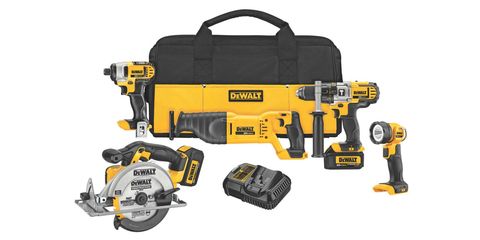
Battery Operated Power Tools have revolutionized Home Improvement projects big and small. Gone are the days of dragging in a roll of masking tape and trying to string some power cords together. These cordless power tools make it easy to do just about anything with the click of a button. No matter if you’re looking to paint a shed, build furniture, or build shelves or cabinets, you can do it with one of these cordless power tools. Most of them come with their own carrying case but if you don’t have one, most will come with a carry bag for easy storage.
Battery Operated Power Tools have come a long way since their inception. Their biggest competitor is the corded power tool which is an evolution of the corded model that first came out over 40 years ago. Cordless has come a long way from its early days. Today you can find battery powered screwdrivers, saws, and hammers. The only thing they can’t do is weld or paint.
Battery Operated Power Tools rely on Lithium or Li-Ion batteries. They are designed for extended use and can withstand constant use over many months. Because of this, batteries are inexpensive and readily available. The two main types of batteries are nickel cadmium (NiCad) and lithium metal (Li-Mn). Other common batteries include glow-in-the-dark and disposable ones.
All power tools require a certain amount of initial start up time. Most batteries have a start up time of between two and five hours. After this time, the batteries will begin to charge and allow the tools to become loaded. You should also make sure that your tool has enough batteries to power all of your tools at once.
Nickel Cadmium Batteries like the NiCad are commonly used in rechargeable batteries like cell phones and laptops. They have high discharge rates and low power per volt. Because of this, they tend to leak out energy quickly and cannot handle the torque or fast speeds that are required from many of today’s power tools. While NiCad batteries can last longer than other batteries like the li-cad, they also produce less power and run out of charge more quickly.
Lithium metal batteries like the Li-Mn batteries are more stable and long lasting. These batteries are also used in many corded electric tools. The major benefit to these batteries is their ability to withstand many charging cycles and will continue to work for longer periods before requiring recharging. They are most often used in hobbyist and precision shop applications.
The rechargeable battery called the deep cycle batteries come in three different types. The most common type is the alkaline battery. The deep cycle batteries have a large surface area and good discharge rates. These batteries can be used in corded and cordless tools and many are designed specifically for specific job functions. Some of the most common batteries used in these tools are the Li-Ion and Li-polymer.
The nickel cadmium battery, or NiCad, is the newest type and has been the longest lasting among the battery powered tools. The NiCad has better performance than the alkaline battery. It also has higher energy efficiency, greater capacity and better protection. Because it can be used in many different applications, it is the most popular battery for power tools. While it is expensive, the long life and durability make it an excellent choice for construction workers, landscapers and homeowners. It is available in cordless and corded forms.
Nickel Cadmium or NiCad rechargeable batteries are also used in hand held battery powered drills, electric razors and pliers. The Lithium battery is used in many of today’s more powerful household tools and in many of today’s high performance mobile power tools. The Lithium ion cells are safer to work with than alkaline batteries and provide a great alternative. They are available in both cordless and corded forms. If safety is an issue with your battery powered tools, the lithium based batteries are probably a better choice.
Nickel Cadmium or NiCad batteries, while lasting longer and performing better, can be somewhat harder to come by. The cost of a replacement or reconditioned battery can be rather high. The cost of a single rechargeable battery can range from a few dollars to over $50 depending on the application. This means that batteries will be less available for the lower performing power tools. But as technology improves, the price we pay for battery life will come down.
Battery powered drills, nailers, and other power tools offer a great way to get the job done. But being safe is always the best policy. Make sure you understand the battery features of the tools you are buying, and understand how to properly charge and discharge the battery. You should also practice proper safety techniques when using these types of tools to prevent accidents. By following some simple guidelines, you can avoid injury and save your tools and battery from unnecessary wear and tear.
Are you looking for a battery operated power tools that will last a lifetime? Matrix Tools offers the highest quality drills, impact wrenches and other power tool. Call us today.
